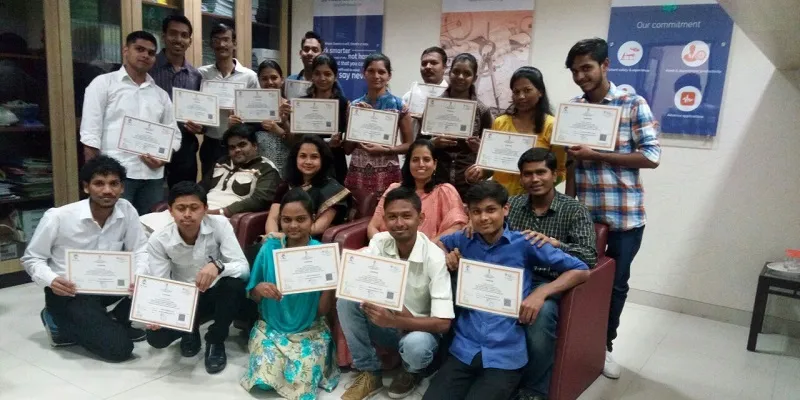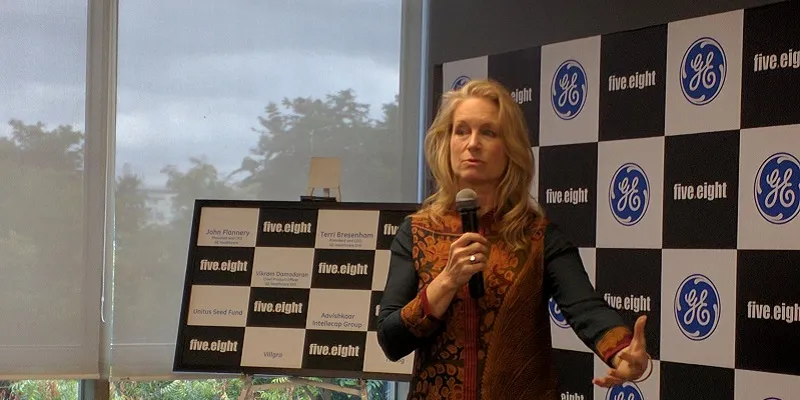How GE Healthcare is working to bring healthcare accessibility, skills to smaller towns
GE Healthcare is currently working with various clinical and market partners to not only build low-cost innovative healthcare products, but also train graduates in healthcare skilling.
One of the biggest concerns for healthcare in India is the delivery and skill reach. There are over 600 million people who do not have access to quality care in India, and 5.8 billion globally.
A study by IBM suggests that less than 10 percent of the rural population in India have access to hospitals. More than 70 percent of India’s population lives in rural areas.
Aiming to change this, GE Healthcare in India is working with healthcare partners and training graduates to equip them with the necessary skills for healthcare.
Terri Bresheham, President and CEO, GE Healthcare’s SHS, in a conversation with YourStory says,
“We have the tech know-how and the care-path know-how. So how do you bring more access to healthcare to the masses? When we started to look at that we realised the healthcare available in the country is concentrated at the urban healthcare centres.”
Bringing the balance
The question, then, is how innovation can happen. Terri adds that as a company GE is focused on innovation of new designs in India because the market, which is pretty tough, requires, high quality and great output at low cost.
She explains, “When you don’t have something it is a chance to leapfrog and innovate better.”
Terri points out the constraints in accessibility, brought about by the lack of affordability, which leads to a major gap in providing the required skills for delivering healthcare.
In order to mitigate the gaps, the team first decided to disrupt the cost for technologies and build products that are designed and manufactured in India, for India.
Building for India
“We have launched a low-cost CT scanner. For many people who purchased this, especially in Tier II and Tier III cities, this was their first CT scanner, which is extremely important in accessing trauma in road accidents,” says Terri.
But even with the machines and systems, what is necessary for GE is to ensure enough people can operate and understand them.
“It is important that we have some amount of skill set and prerequisites and we had to be government accredited, so we decided to work with Class XI and XII science grads who had good grades,” adds Terri.
They started with 11 partners in the market, and over 6,300 students have graduated till date. The team plans to make this over 10,000 every year. The idea has been to bring jobs for the youth, quality to the healthcare system and better access to the rural markets.
The team is currently working on multiple different programmes – some are in training high-school students to be X-Ray technicians, others are to train existing people by upgradation of skills. The main programmes they work with are with mid wives, critical care nursing, radiology and cardiology. Presently, the team has begun with X-Ray technicians.

How does the programme work?
“We were confident in what we wanted to achieve, given that we were one of founding members of the healthcare sectors skill council. Each of us took a segment of the healthcare delivery process, and radiology made sense. We are working with clinical partners to ensure quality and credibility,” say Terri.
GE conducts six-month classroom training and six-month hands-on training for its partners. They then need to pass a government accreditation test, and meet the requirements of the programme. After this they are certified as an expert technician.
The graduates can also choose a six-month programme to become a certified CT technician and another six-month programme to become a certified MR scanner technician.
The team is targeting the youth of Tier II and III cities. But asking them to spend three years in school with no income is a tall order.
“We, therefore, broke the period into pieces–to make it an economically-viable approach. It is for science grads who have the marks but not the support to go to college. We want to try going into the high schools and introducing jobs in the healthcare space earlier on,” adds Terri.

Working in a tough market
The students are also a part of a community so they can continuously stay connected with each other.
According to a 2015 report by Deloitte, India has a ratio of 0.7 doctors per 1,000 people and nurses of 1.5 per 1,000. This is far from WHO’s ideal of 2.5 doctors per 1,000 people. A study of the findings by Public Health Foundation of India for the Ministry of Health and Family Welfare states that there is a whopping 97.9-percent skill gap across various health workforce categories in India.
It is this skill-gap that GE aims to change. However, one of the biggest challenges has been to build awareness. People simply aren’t aware of what an X-Ray technician does and how it helps in reducing the skill gap.
“While we have a lot of challenges, India has progressed in a lot of ways that is sometimes foreshadowing where healthcare is going to go in the West. There is a lot for the rest of the world to learn from the best examples we would have here in India,” concludes Terri.







